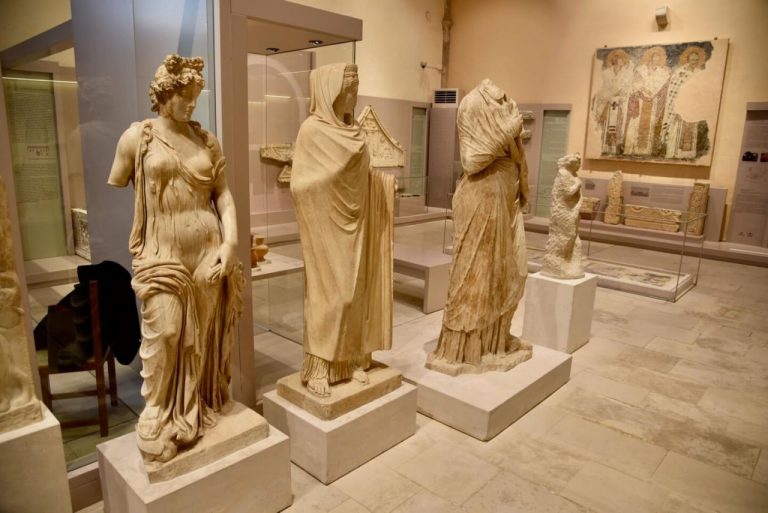Our cultural exploration of Crete took us to the heart of Rethymnon, where the Archaeological Museum, established by the Society of Friends of Education in 1887, promised a deep dive into the island’s ancient history. Located in the Pentagon bastion, just opposite the main gate of Fortezza, with its gift shop nestled in Lotzia, the museum serves as a guardian of the region’s rich archaeological heritage.
A Treasure Trove of History:
The museum’s extensive collection, featuring artifacts from ancient sites, caves, and excavations across the Rethymnon Prefecture, spans a vast timeline from the Late Neolithic and Proto-Minoan periods to the late Roman era. Each artifact, be it a vessel, tool, figurine, coin, weapon, helmet, piece of pottery, piece of jewelry, marble sculpture, or stele, tells a story of life in ancient times, offering us a window into the daily lives, beliefs, and artistic expressions of the civilizations that once thrived in Crete.
Chronological and Geographical Narratives:
The organization of the displays by excavation site and chronologically enhanced our understanding of the archaeological and historical progression in the region. This thoughtful arrangement allowed us to journey through time, witnessing the evolution of culture, technology, and art in Crete. From the intricate craftsmanship of Minoan pottery to the robust forms of Roman marble sculptures, the museum showcases the diverse influences that have shaped the island’s heritage.
A Gateway to Ancient Crete:
The Rethymnon Archaeological Museum stands as a vital educational institution, not only preserving the artifacts of ancient Crete but also interpreting them for modern audiences. Each item on display, from the everyday objects to the remnants of grand temples, offers insights into the complex tapestry of human history that has woven together over millennia on this Mediterranean island.
Conclusion:
Our visit to the Rethymnon Archaeological Museum was a journey through the annals of Crete’s ancient past, revealing the depth and diversity of its archaeological and cultural landscape. As we left the museum, the stories of ancient civilizations that had once flourished on this island stayed with us, a reminder of the enduring legacy of Crete’s history and the ongoing efforts to preserve and celebrate it for future generations.
Sorry, no records were found. Please adjust your search criteria and try again.
Sorry, unable to load the Maps API.
